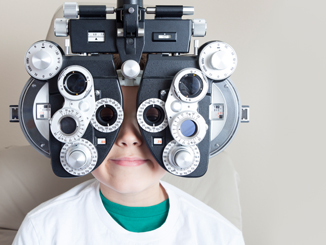Four Tips to Make Sure Kids’ Eyes and Vision Are ‘Grade A’ This School Year
With back-to-school time around the corner, parents will be scrambling to buy new school supplies and clothes. As they tick off their long list of school to-dos, ophthalmologists are reminding moms and dads not to neglect one of the most important learning tools: their children’s eyes.
Good vision and overall eye health are vital to learning. Insight Eye Specialists join the American Academy of Ophthalmology in emphasizing the importance of healthy vision to academic success during Children’s Eye Health and Safety Month in August.
Because children are still growing, being vigilant about eye health is important. The earlier problems are identified; the sooner they can be addressed. For healthy eyes and vision throughout the school year, Insight Eye Specialists and the American Academy of Ophthalmology recommend the following four tips:
Get regular childhood vision screenings – Children’s eyes change rapidly, making regular vision screenings an important step in detecting and correcting eye problems early. In addition to screenings for infants, the Academy recommends further vision screening for children when they are:
- Pre-school age, between age 3 and 3 and a half
- Entering school

- Experiencing a possible vision problem
For school-age children, a vision screening, which is less comprehensive than a dilated eye examination by an ophthalmologist, can be performed by a pediatrician, family physician, nurse or trained technician during regular checkups. If the screening detects a problem, the child may need to see an ophthalmologist — an eye physician and surgeon – or other eye care professional.
- Know and share your family eye health history – Everyone should find out whether eye conditions or diseases run in their family. Parents should share that information with the person performing the screening when possible. Examples of common eye conditions include nearsightedness, crossed eye, known as strabismus, and lazy eye, known as amblyopia. If these are not treated in childhood, they can cause permanent vision loss in one eye.
- Watch for signals of eye problems – Parents should be alert to symptoms that could indicate an eye or vision problem, such as complaints of eyestrain, headaches and squinting when reading or performing other common activities. Other symptoms to look for include a white or grayish-white coloring in the pupil, one eye that turns in or out, or eyes that do not track in sync together.
- Wear protective eyewear when playing sports – Eye injuries while playing sports can cause serious damage, whether by getting smacked with an elbow during basketball or hit with a hockey stick. If your child plays racket sports, hockey, field hockey, baseball or basketball, consider having them wear goggles or other certified protective eyewear.
Visit the Academy’s website to learn more about common childhood eye conditions.
Comments are closed.
